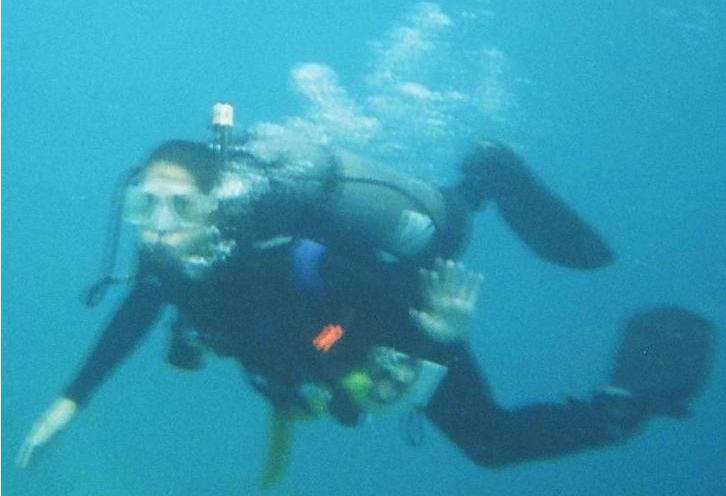Scuba Diving
Home
Scuba Diving Equipment
Scuba Diving Links
Heather Holmes' Page of

One of my new interests is scuba diving. I became YMCA certified through the University of Florida Academic Diving Program.
 During the course, we went on a diving trip to Key Largo where we did five dives to get our certifiction. Now that I have my certification, I plan to purchase more gear. I currently have a mask, fins,and snorkel. I also am hoping to go on scuba diving trips to various springs and to do some ocean dives as well. The images featured on this page are from my dive in Key Largo. They are taken at a depth of about 40 ft.
During the course, we went on a diving trip to Key Largo where we did five dives to get our certifiction. Now that I have my certification, I plan to purchase more gear. I currently have a mask, fins,and snorkel. I also am hoping to go on scuba diving trips to various springs and to do some ocean dives as well. The images featured on this page are from my dive in Key Largo. They are taken at a depth of about 40 ft.
Some Scuba Diving Facts
The acronym scuba diving stands for Self Contained Underwater Breathing Apparatus. Scuba diving can be a fun and adventurous sport, but is also dangerous if not practiced properly. There is always a risk when diving which could result in injury or death.
Types of Diving Environments
Scuba diving allows a person to view and explore an underwater world. You can explore places that are man-made or natural dive sites.  Man-made sites include artificial reefs, oil rigs, jetty, or shipwrecks. Natural dive locations include canyons, lakes, rivers, springs and coral and rock reefs. Popular dive areas include California, Cozumel, the Gulf Coast of Lousiana and Texas, the Great Lakes, Turks and Caicos and the Galapagos Islands.
Man-made sites include artificial reefs, oil rigs, jetty, or shipwrecks. Natural dive locations include canyons, lakes, rivers, springs and coral and rock reefs. Popular dive areas include California, Cozumel, the Gulf Coast of Lousiana and Texas, the Great Lakes, Turks and Caicos and the Galapagos Islands.
What Happens When You Scuba Dive
- Due to the refraction, or bending of lightwaves, objects appear closer and larger under the water
- Sound waves travel four times faster in the water
- Heat loss is 20 times greater in water
Important Rules to Remember When Scuba Diving
- Always dive with a buddy
- Equalize early and often
- Never hold your breath
- Blow bubbles
- Arrive alive at five (make sure you surface with at least 500 psi in your tank)
 Types of Diving
Types of Diving
- Rescue Diving
- Wreck Diving
- Ice Diving
- Cavern and Cave Diving
- Night Diving
- Technical Diving
These types of specialized diving require you to take additional courses after you receive an openwater scuba diving certification.


 During the course, we went on a diving trip to Key Largo where we did five dives to get our certifiction. Now that I have my certification, I plan to purchase more gear. I currently have a mask, fins,and snorkel. I also am hoping to go on scuba diving trips to various springs and to do some ocean dives as well. The images featured on this page are from my dive in Key Largo. They are taken at a depth of about 40 ft.
During the course, we went on a diving trip to Key Largo where we did five dives to get our certifiction. Now that I have my certification, I plan to purchase more gear. I currently have a mask, fins,and snorkel. I also am hoping to go on scuba diving trips to various springs and to do some ocean dives as well. The images featured on this page are from my dive in Key Largo. They are taken at a depth of about 40 ft.
 Man-made sites include artificial reefs, oil rigs, jetty, or shipwrecks. Natural dive locations include canyons, lakes, rivers, springs and coral and rock reefs. Popular dive areas include California, Cozumel, the Gulf Coast of Lousiana and Texas, the Great Lakes, Turks and Caicos and the Galapagos Islands.
Man-made sites include artificial reefs, oil rigs, jetty, or shipwrecks. Natural dive locations include canyons, lakes, rivers, springs and coral and rock reefs. Popular dive areas include California, Cozumel, the Gulf Coast of Lousiana and Texas, the Great Lakes, Turks and Caicos and the Galapagos Islands.